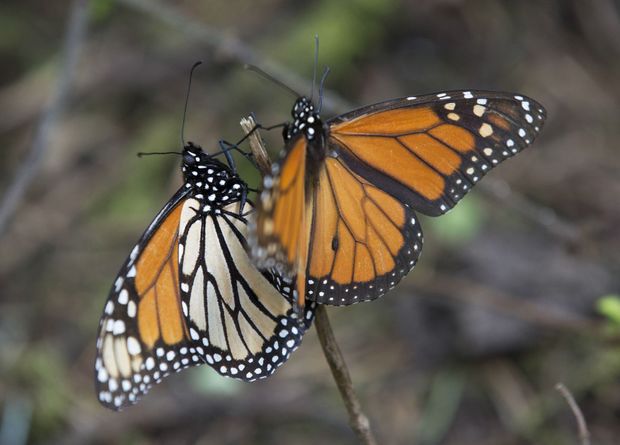
Monsanto’s Roundup Blamed for the Decline of the Monarch Butterfly
An environmental group that opposes genetically modified crops is issuing a 77-page report on the decline of the monarch butterfly that lays much of the blame on Monsanto’s Roundup Ready crops and Roundup herbicide.
The Center for Food Safety will release the report Thursday and brief members of Congress on it.
The report acknowledges that diminished wintering grounds for the migrating butterfly — whose annual journey takes it through Missouri and Illinois — plays a role in diminished monarch populations.
February 4, 2015 | Source: STL Today | by Chuck Raasch
WASHINGTON • An environmental group that opposes genetically modified crops is issuing a 77-page report on the decline of the monarch butterfly that lays much of the blame on Monsanto’s Roundup Ready crops and Roundup herbicide.
The Center for Food Safety will release the report Thursday and brief members of Congress on it.
The report acknowledges that diminished wintering grounds for the migrating butterfly — whose annual journey takes it through Missouri and Illinois — plays a role in diminished monarch populations.
But the report also contains one of the most direct challenges to date of Monsanto’s Roundup products and their impact on the butterfly. Among other things, the environmental organization calls for the phasing out of herbicide-resistant plants over 10 years, and for a halt in a new generation of genetically engineered crops it says are being planned by Monsanto and other companies.
That phaseout has virtually no chance of getting through a Republican-controlled Congress, which is already in major fights with the administration of President Barack Obama on a variety of regulatory fronts.
But on the heels of the Fish and Wildlife Service’s decision to consider endangered species status for the butterfly, the report is another salvo in an escalating regulatory and public relations battle over the iconic monarch butterfly.
Monsanto spokeswoman Charla Lord said the Creve Coeur-based company would not respond to the report without seeing it in full, but she said Monsanto was “working, alongside many stakeholders including those in the agriculture sector, federal agencies, conservation groups, and public sector researchers, to help the monarchs.”
The Center for Food Safety was among several environmental groups that in December successfully petitioned the U.S. Fish and Wildlife Service to open a study on whether the butterfly should be on the endangered species list, in part because of threats from genetically modified crops and herbicides. Monsanto is a leader in their production.
Environmental and food safety groups said in their endangered species petition that the butterfly’s population had fallen from a high of 1 billion in the mid-1990s to 35 million in 2013.
The World Wildlife Fund and the Mexican government last week released a survey of the monarch’s wintering grounds in a western Mexican forest. The study showed that while the area occupied this winter by the hibernating monarchs is up 69 percent over 2013 (to 2.73 acres, just slightly larger than a typical square city block), it is still the second-smallest wintering ground of the last two decades.
The monarch is dependent upon milkweed for food and reproduction during its annual 1,200- to 2,800-mile migration from Mexico to the Midwest and Canada.
